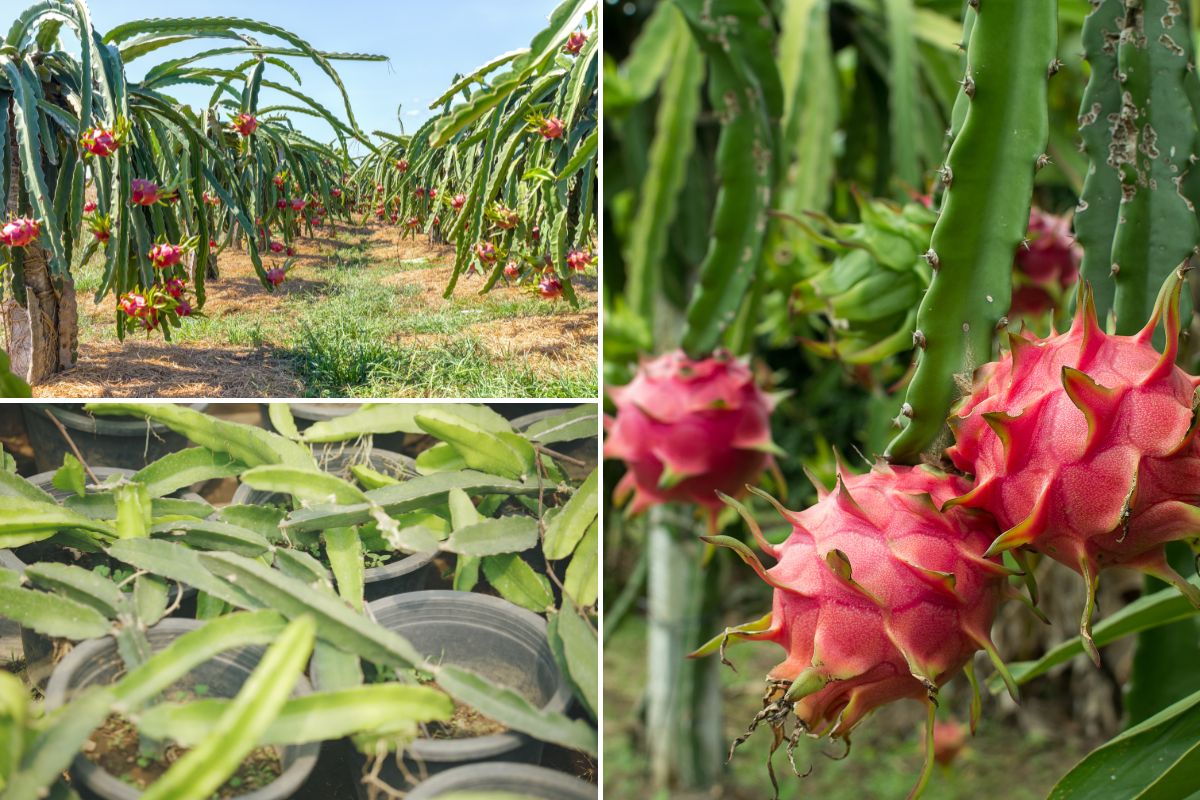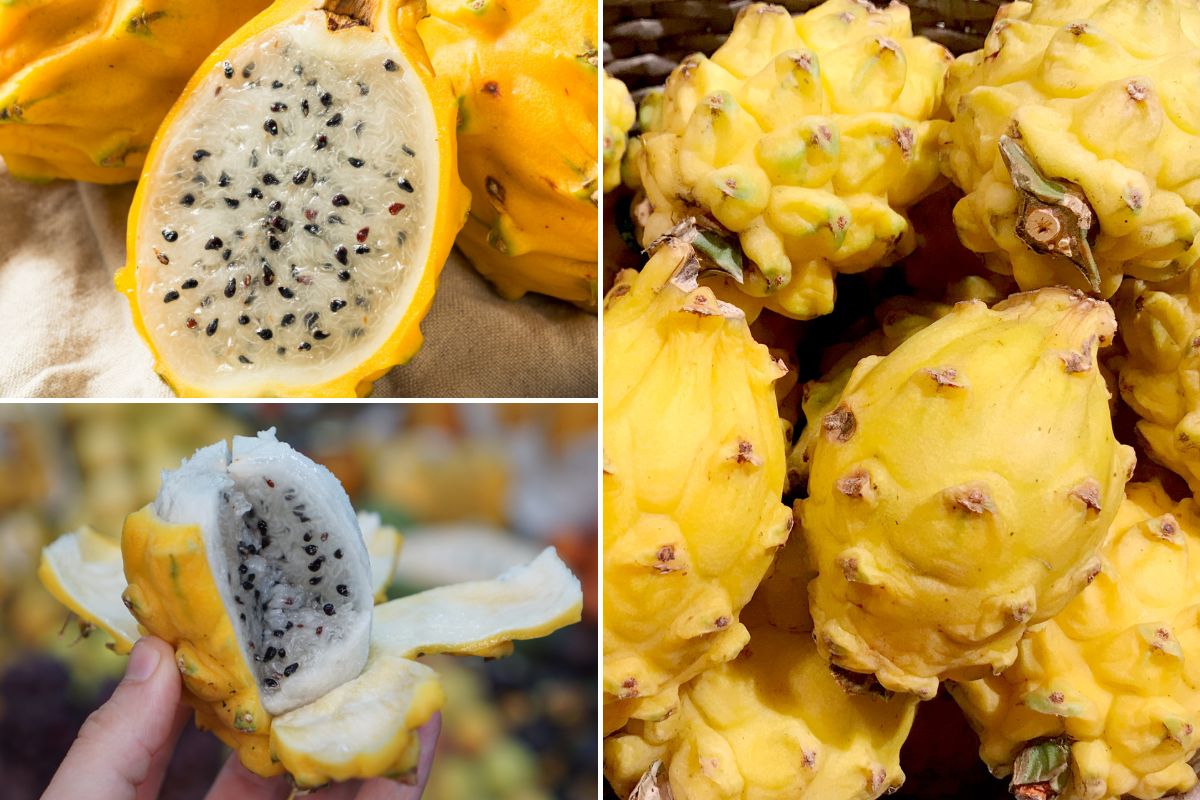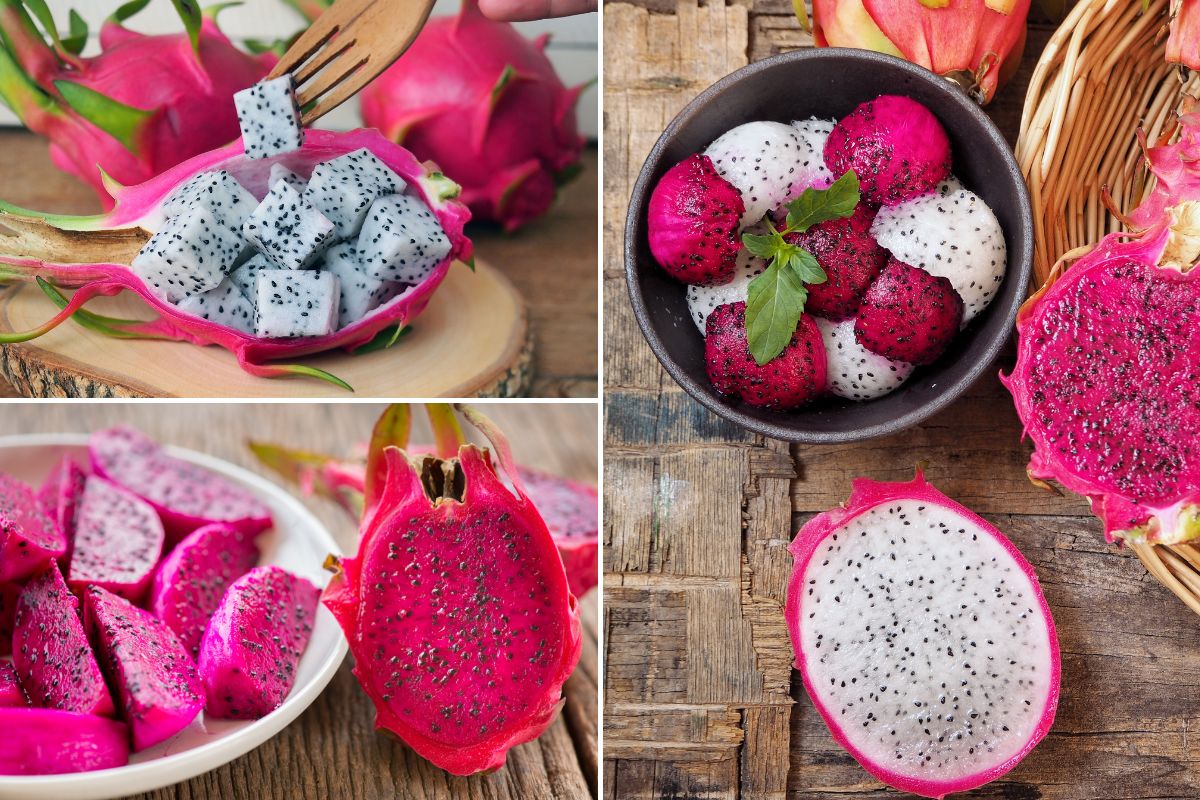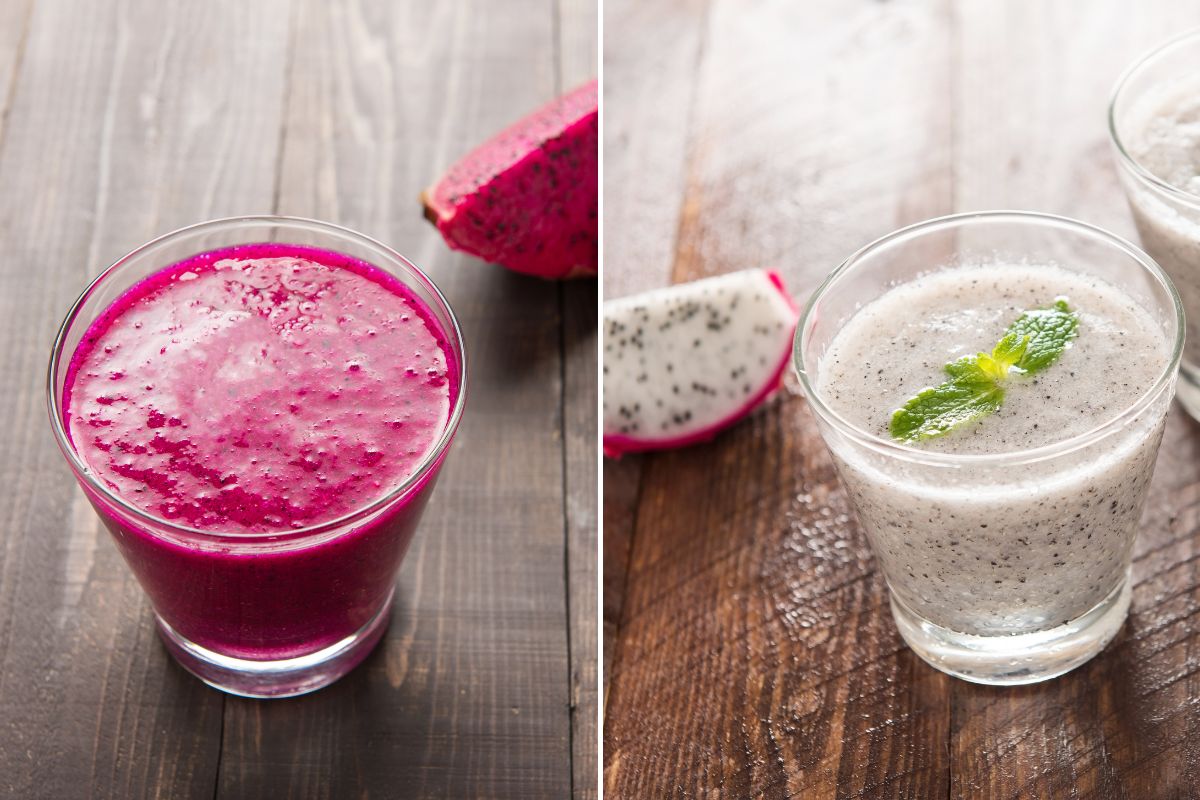What's not to like about a fruit that comes from a cactus and that has vibrant hot pink skin covered in soft green-tipped scales, or looks like a mini pineapple without the top?
They are way up there with some of the other exotic tropical fruits in terms of looks and intrigue, and even the flesh is other-wordly; red, reddish purple, or white, and speckled throughout with tiny edible black seeds.
But where can you get dragon fruit, how do you choose the fruit, and more importantly, how do you eat them and what do they taste like?
Where to Get Dragon Fruit
Firstly, how do you get hold of dragon fruit? Well, you can grow one yourself by getting a dragon fruit cutting or plant, which you can grow in the garden or in a large container. They grow best in tropical or subtropical climates but can be grown successfully undercover in a warm sheltered greenhouse in cooler climates. Alternatively, you can go the easy route and buy a couple of fruits from the store.
 Dragon fruit cuttings being started in pots, and well-supported mature plants with fruit ready to be harvested
Dragon fruit cuttings being started in pots, and well-supported mature plants with fruit ready to be harvested
How to Choose Dragon Fruit
Whether you are getting ready to pick your own home-grown dragon fruit, or are buying fruit at a store or market, there are some things to look for in terms of quality and ripeness.
- Appearance: The skin should be evenly coloured, bright and vibrant, and can be pink, red, or yellow. The scale-like protrusions should be well defined and evenly spaced. Dull or faded fruit may be overripe or of lower quality, and avoid fruit that has too many spots, blemishes or looks bruised.
- Texture: If you press the fruit very gently, it should feel firm but not too hard. If it feels too soft or mushy then it might be overripe. Some fruits may have a mild aroma when ripe but a better indication of ripeness is appearance and texture.
- Size: This is not necessarily a good indication of quality as some of the smaller fruiting varieties are just as tasty as the larger fruiting ones. Choose a size that suits your needs.
- Variety: Like other fruits, there are different varieties of dragon fruit to choose from. Some are white fleshed with pink or yellow skin, while others have red flesh and red or pink skin. The red/pink fleshed varieties are very eye-catching! Flavour and sweetness may vary slightly between varieties, so try the different types to find your favourite.
- Storage: Dragon fruit are at their best when fresh and ripe. Once picked, they can be stored in the refrigerator for a few days. Dragon fruit can also be frozen by peeling and cutting fruit into small cubes, and then freezing in a single layer on a tray. Once frozen, place the cubes into a sealed plastic bag, remove excess air and store for up to three months.
 Not all dragon fruit is pink-skinned, and the different varieties, like this yellow dragon fruit, have a different flavour
Not all dragon fruit is pink-skinned, and the different varieties, like this yellow dragon fruit, have a different flavour
What Does Dragon Fruit Taste Like?
Very delicious! That's not very helpful, we know, but it's true!
Dragon fruit has a complex flavour that has been described as a blend of kiwi fruit, pear and watermelon. It's also been described as pear and kiwi fruit with a hint of citrus, and also as having berry, melon, lemonade or coconut flavours.
White fleshed dragon fruit has the mildest flavour with tiny seeds that you don't notice when eating. Red dragon fruit is fruitier with a hint of sweet earthiness, and yellow dragon fruit is noticeably sweeter with larger and slightly crunchy seeds.
Overall though, the flavour is mildly sweet, and the texture of the flesh is creamy yet crunchy. Some say the texture is a bit like a pear, and can range from crisp to soft depending on ripeness.
How To Prepare Dragon Fruit
Dragon fruit is best when picked fresh and sliced just before you plan on eating it.
Cut the fruit in half lengthwise, then, using a spoon, slip it between the flesh and the skin and carve out the flesh. Slice or cube the flesh, or use a melon baller to create interesting round pieces.
Sliced leftover dragon fruit can be stored in an airtight container for up to 1 day, but as soon as it starts to turn brown or go mushy, then it is best to put it in the compost.
 Cubes, slices and balls of dragon fruit give this exotic fruit even more visual appeal
Cubes, slices and balls of dragon fruit give this exotic fruit even more visual appeal
How To Use or Eat Dragon Fruit
Dragon fruit is delicious on its own but can be used to make fruit salads as well as sorbet, ice cream, smoothies and other drinks.
Try this delicious Dragon Fruit Smoothie:
- 1 cup diced, frozen dragon fruit
- ½ cup frozen or fresh strawberries
- 1 frozen banana, broken into pieces
- 1 ½ cups unsweetened non-dairy milk, or milk of choice
- 1 tablespoon chia seeds
- Juice of one lemon
Add all the ingredients to a high speed blender and blend on high until smooth. If you use fresh instead of frozen fruit, then add some ice to get a better texture.
Dragon fruit is a good source of vitamin C and other antioxidants (especially the red-fleshed varieties), and they are high in fibre which can aid digestion. However, when eating dragon fruit, whether it's fresh, in fruit salads, or smoothies, take care not to eat too much because large quantities can cause gas, bloating and cramping.
Now that you know how to use dragon fruit and what they taste like, we hope you're keen to give dragon fruit a go… either growing it for yourself, or trying the different varieties available in the stores and markets.
 Brightly coloured dragon fruit smoothies are sure to cheer up your day
Brightly coloured dragon fruit smoothies are sure to cheer up your day





